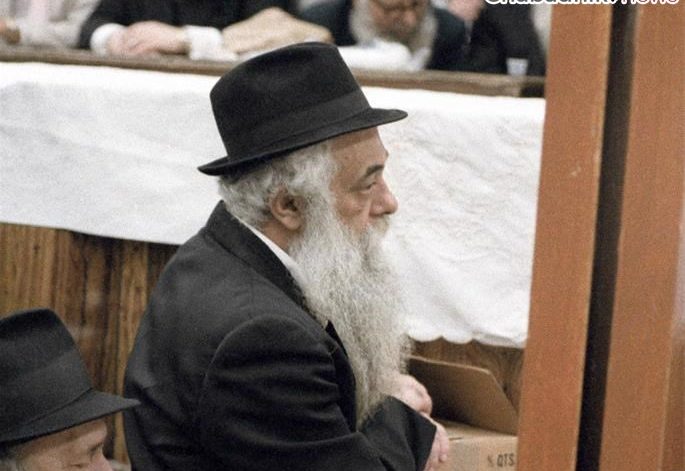Gifted with prodigious memory, spent lifetime absorbing and disseminating the Rebbe’s teachings to the world
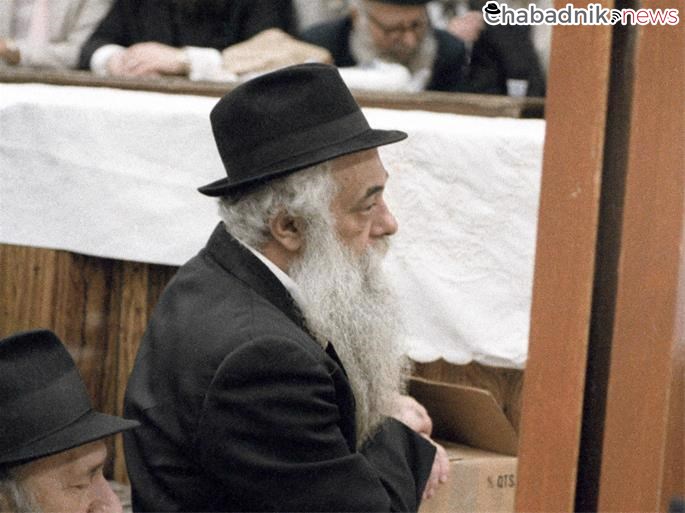
Rabbi Yoel HaKohen Kahn, known to all simply as Reb Yoel, was a leading disciple of the Rebbe, Rabbi Menachem M. Schneerson, of righteous memory, and his oral scribe. Blessed with unique intellectual gifts and a once-in-a-generation memory, Reb Yoel was single-mindedly dedicated to absorbing, recording and disseminating the Rebbe’s voluminous teachings for more than seven decades. He was a walking repository who could reach back decades into the past to instantly recall vast swaths of the Rebbe’s talks almost verbatim. Kahn passed away on Thursday, July 15 (6 Menachem Av) at the age of 91.
He had arrived in New York at a providential moment. When the Soviet-born rabbinical student set out from the port of Haifa, Israel, in February of 1950, he had intended to study in the glow of the Sixth Rebbe, Rabbi Yosef Y. Schneersohn, of righteous memory (1880-1950). By the time his ship docked at Ellis Island 12 days later, the revered master had passed away. Chassidim quickly recognized the Sixth Rebbe’s son-in-law, Rabbi Menachem M. Schneerson, as his successor as Rebbe. Within weeks Reb Yoel had begun transcribing the Rebbe’s oral talks and mailing them to Jewish communities across the world.
On the first anniversary of the Sixth Rebbe’s passing, the Rebbe finally agreed to take on his father-in-law’s role and become the seventh leader of Chabad, delivering his first Chassidic discourse that evening. While previously, Chassidim would have received a written version of the discourse in the days after the farbrengen, with this new Rebbe nothing was forthcoming. When Reb Yoel had a private audience with the Rebbe a week later, it became clear to him that due to his already packed schedule of engagement with those seeking his advice and counsel from the wider Jewish world and even far beyond that, the Rebbe would not be providing written versions of his oral discourses. Instead, the Rebbe expected the chozer (oral scribe) and his team to hand in transcripts that he would edit. This would be Reb Yoel’s lifelong calling. Over more than four decades he stood before the Rebbe and diligently memorized thousands upon thousands of hours of complex Torah teachings. Reb Yoel would also lead the singing during the Rebbe’s farbrengens and the oral repetition (chazara) that followed.
The Rebbe’s primary medium of teaching was the farbrengen, Chassidic gatherings held in his synagogue at 770 Eastern Parkway in Brooklyn, N.Y., during which the Rebbe would seamlessly move from discussions of Maimonides’ legal code, to the mystical depths of the Zohar, complex passages of Talmud, Chassidic philosophy and current events, all of it refracted through his unique prism of Torah synthesis. There were less than a handful of occasions when Reb Yoel wasn’t on hand to memorize these talks. Early on, one Shavuot holiday, the Rebbe arrived unexpectedly to deliver a surprise discourse at daybreak, waiting for Reb Yoel to arrive before beginning. To ensure that never happened again, the next year Reb Yoel was ready and waiting at his usual place when the Rebbe arrived.
Reb Yoel was also a master educator, with an exceptional ability to clarify even the most abstruse, esoteric and abstract of Chabad teachings, and make them accessible to anyone willing to exert a little effort to concentrate their mind and make themselves receptive. Through his fluent elucidations, notions that ordinarily remain in the realm of transcendent faith were seamlessly translated into clear cut logical arguments that proceeded step by sure-step into irrefutable conclusions. Humble and unassuming, he nevertheless spoke with measured authority, punctuated by bursts of sharp wit and twinkling humor. His hat tilted back on his head above his broad forehead, his long and bushy beard in chronic disarray, and a cigarette perpetually between his fingers (in later years he would swap the cigarette for a perpetual glass of tea), he was a compelling teacher who left an indelible mark on the many generations of students who studied under his tutelage from the mid-1950s right up to the last years of his life.
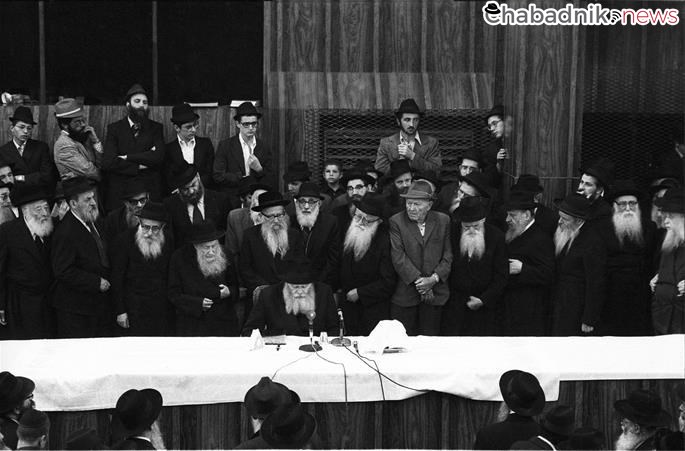
As chief chozer, Reb Yoel also guided generations of young scholars in the arts of memorization, repetition and transcription, and it is important to to note that many of the Rebbe’s talks were delivered on Shabbat and Festivals, when electronic recordings cannot be used. Under Reb Yoel’s watchful eye, these teams of scholars would commit the Rebbe’s teachings to writing in multiple languages and formats. Though the Rebbe did not usually write on his own, he poured countless hours into the editing process. At times, the Rebbe edited so heavily that it would have been easier for him to have written it on his own in the first place, but through this process he was teaching Reb Yoel and the team of chozrim how to organize the free-flowing oral word into clear, concise and compelling prose.
One of the most characteristic features of the Rebbe’s interpretive approach is the combination of sweeping breadth with meticulous attention to detail, and Reb Yoel honed a writing style whose rigorous and incisive precision deftly marshalled the array of references, questions, interventions, elaborations and clarifications into tightly argued and accessible essays. He would spend countless hours, day and nights, laboring to draft and redraft, edit and re-edit, until he deemed a piece ready to be submitted to the Rebbe for review. Over the decades, Reb Yoel’s careful work produced Likkutei Sichot, the 39 volume set of the Rebbe’s edited talks; the six-volume Maamarim Melukatim containing the Rebbe’s edited discourses and the as of yet unfinished Torat Menachem, numbering 118 volumes at the moment, which presents Hebrew renditions of the Rebbe’s farbrengens in their complete and unedited form.
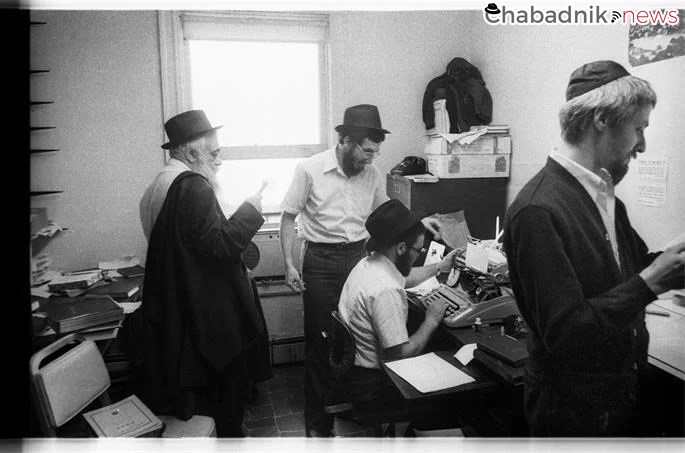
A Leading Editor of Chassidic Encyclopedia
Possessed of an extraordinary capacity for the organization of wide ranging and complex fields of knowledge, Reb Yoel was tasked by the Rebbe to lead the compilation of Sefer Ha’Arachim, a scholarly encyclopedia of Chassidic concepts, the ninth volume of which was released in 2019, and upon which Reb Yoel continued working until his last days. This project was so immense that these nine volumes only cover a fraction of the entries that begin with the first letter of the Hebrew alphabet, aleph. The published corpus of Chabad chassidic texts comprises several thousand volumes of extremely intricate and varied material, including such diverse areas as philosophy, hermeneutics, ethics, cosmology, psychology and kabbalah. The ideas are not presented systematically or topically, but associatively, with each new rebbe engaging the teachings of his forebears and building expansive new layers of explanation upon them. A single idea is often engaged in hundreds of different textual iterations, and each provides rich and nuanced perspective that is not replicated elsewhere.
The task of parsing this thick web of interwoven teachings, and organizing them into a set of alphabetically organized articles, would actually have been impossible even for Reb Yoel, had the Rebbe himself not laid the groundwork for him through his own meticulous compilation of indexes to the Chabad corpus in the 1940s and 50s. Moreover, the Rebbe also provided the particular conceptual framework through which all these diverse details could be seen as refractions of a single whole. On this basis, and with the Rebbe’s constant encouragement, Reb Yoel took on this epic intellectual undertaking. The first volume of Sefer Ha’Arachim was published in 1970, with a special treatise penned by the Rebbe himself included as an appendix. Its title translates as “On the Essence of Chassidus,” and it sets out the Rebbe’s vision of Chassidus as the revelation of the essence that transcends all particulars and inheres at the core of every particular element of existence.
In his position as mentor at the Central Lubavitch Yeshiva he continued teaching and guiding young rabbinical students not only academically, but even more importantly, in the vibrant practice of the Chassidic path in life. Due to his lifelong engagement with the Rebbe’s teachings, his insight and scholarship were sought by rabbis and leaders from across the Jewish world, and when—in his later years—he traveled to the Holy Land, he was warmly welcomed by revered Chassidic rebbes and sagacious heads of yeshivas.
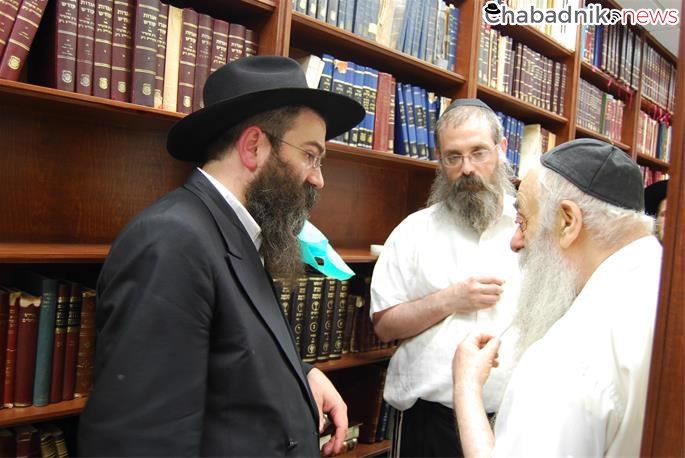
A Lifetime of Dedication and Service
Yoel Kahn was born in Moscow, the Soviet Union, on 16 Shevat, 5790 (1930) to Refoel Nachman (“Folleh”) and Rivkah Kahn, members of the underground network of Chabad Chassidim who bravely fought to bolster Jewish life and observance behind the Iron Curtain. For the first three years of his life, he never saw his father, who had been imprisoned by the Soviets for counter-revolutionary activities and the crime of maintaining a connection with the Sixth Rebbe.
Reb Folleh Kahn, a prolific writer, would later recall his Soviet prison experience in the Hebrew-language Behind the Iron Curtain. Among his other works, books read and referenced to this day, are Lubavitch V’Chayaleha, which tells the stories of the graduates of the original Tomchei Temimim Yeshivah in the village of Lubavitch, and Shmuos V’Sippurim, recording Chassidic stories going back generations and the author’s own recollections from his time in Lubavitch before World War I.
In 1935 the family managed to leave Russia for Poland, at one point traveling through Austria. There, at the Purkersdorf sanatorium, a young Yoel met the Sixth Rebbe’s son-in-law for the first time, as well as his father-in-law, the Sixth Rebbe. Later, as they waited on the platform in the Vienna train station, they were surprised to see the future Rebbe arriving to see them off. Memorably, he distributed chocolate to Reb Yoel and his siblings. From Europe the family headed to Mandatory Palestine, where Yoel was enrolled in the fledgling Chabad yeshivah in Tel Aviv, which was then led by Rabbi Chaim Shaul Bruk.
A brilliant prodigy with an aptitude for in-depth study, he plumbed the depth of Torah scholarship. His study partners included Rabbi Shlomo Berman, who later became a head of the Ponovezh yeshivah in Bnei Brak.
After arriving in New York and learning of the passing of the Sixth Rebbe, Reb Yoel immediately formed a bond with his successor, the Rebbe, and began to thirstily drink in his words. Yoel’s letters home to his parents from that period chronicle the awe, respect, and admiration that he and his peers felt toward the new Rebbe and the high hopes that his leadership heralded for Chabad, the Jewish people, and the world.
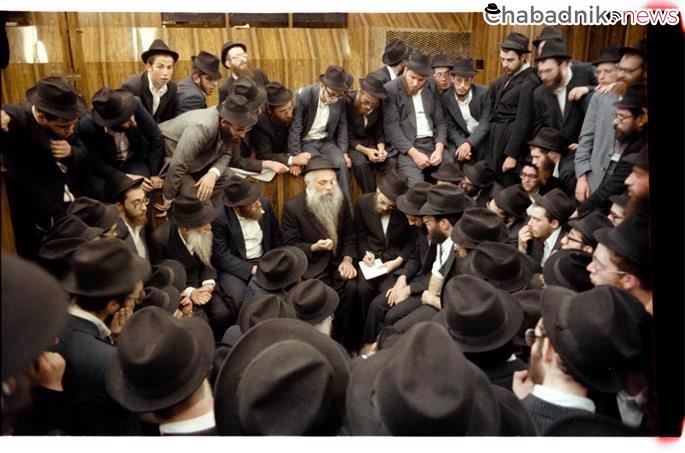
In 1954, Reb Yoel married Leah Butman, and the couple settled in the Crown Heights neighborhood, where he served in the position of mashpia (Chassidic mentor), serving as both teacher and personal guide to young students, introducing them to the beauty and depth of Chassidic thought. In time, he became the primary mashpia of the Central Chabad Yeshivah. For yeshivah students and scholars from outside of the Chabad world, he was often the first port of call, a wise and erudite guide to the complex spiritual world of Chabad Chassidism.
Following the Rebbe’s passing in 1994, he served as a bastion of authentic Chassidic wisdom and an elder statesman, rooted in the teachings of the Rebbe, from whom he never parted.
Reb Yoel Kahn is survived by his wife, Leah Kahn, and deeply mourned by hundreds of thousands of his students and those whose lives have been enriched by the teachings he conveyed.

